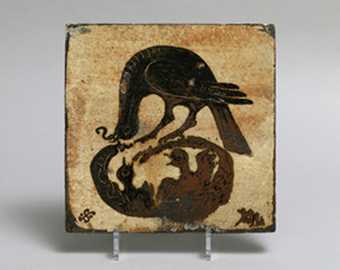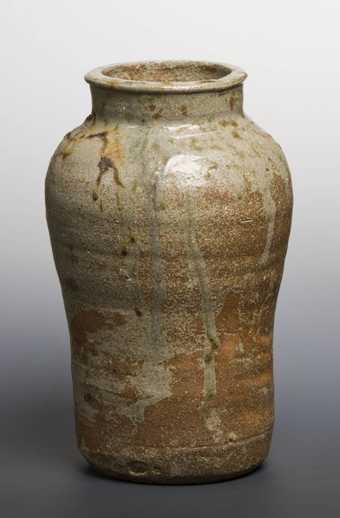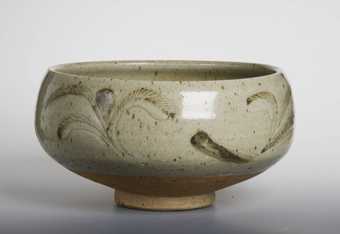
Bernard Leach
Flat-sided Bottle (1957)
Tate
Tenmoku is the Japanese name for a traditional iron-oxide glaze, originating from China. It has a distinctive dark, mottled colour that lightens to a reddish brown, depending on application and firing. Its simple earthy tones were highly popular with Bernard Leach and Shoji Hamada, who were exploring the fusion of both Eastern and Western ceramic traditions, which they developed with the setting up of the now famous Leach Pottery in St Ives in 1920. Funded by the Guild of Handicraft, Leach and Hamada wanted to challenge the homogeneity of British mass production and position ceramic practice as an equal to the fine arts. Not only did the potters construct the first Japanese-style climbing kiln in the West, their subsequent influence on studio pottery and the philosophy of ceramics became internationally renowned. Leach's influence and ideals were to resonate strongly within the community of Modern artists living in post-war St Ives.
This focused display, including works by Bernard Leach, Shoji Hamada and William Marshall (Leach's longest resident potter and assistant), draws on the personal collection of George and Cornelia Wingfield Digby, bequeathed in part to Tate in 2005.




